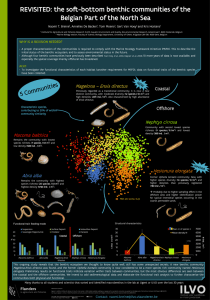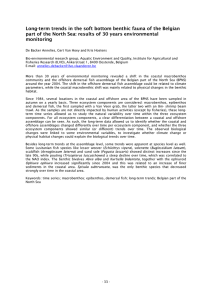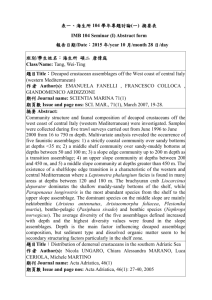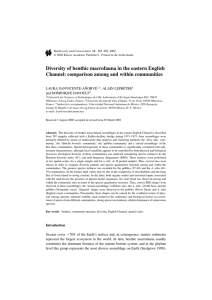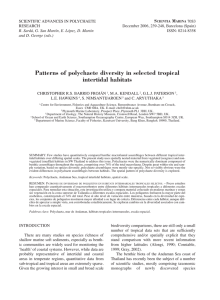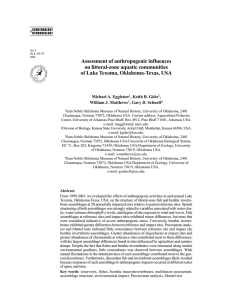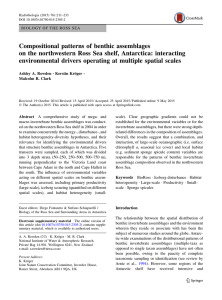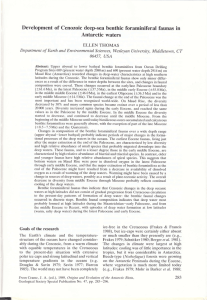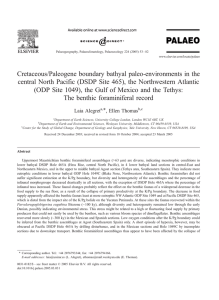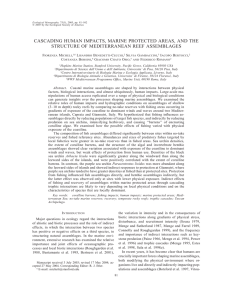REVISITED: the soft-bottom benthic habitats of the Belgian Part of
advertisement
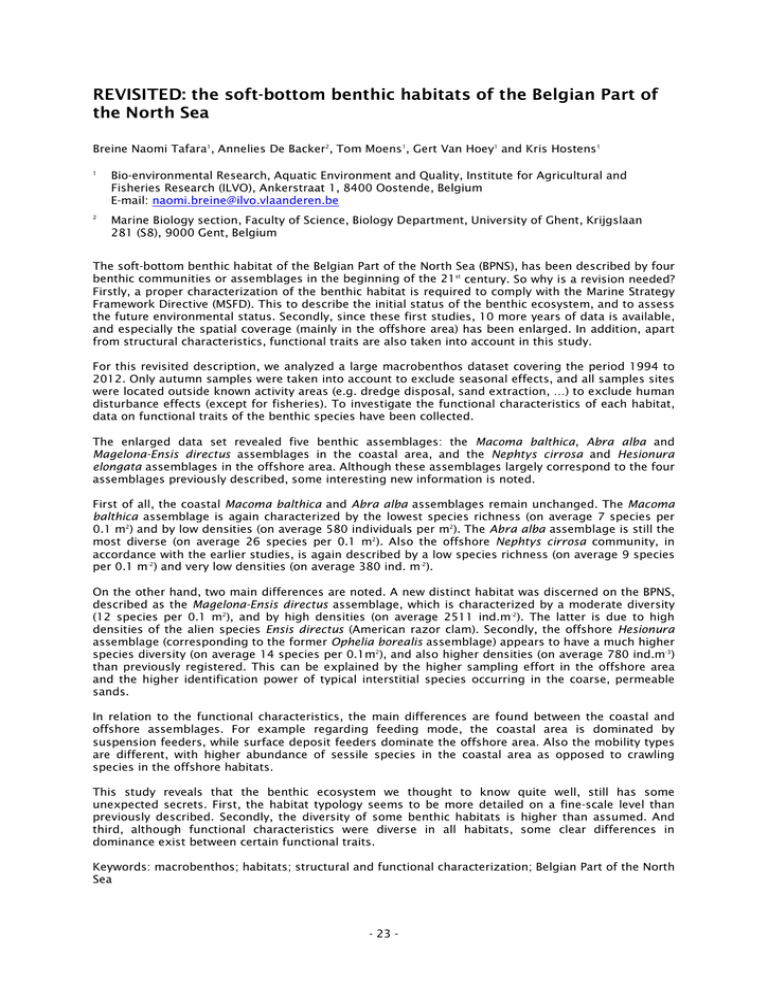
REVISITED: the soft-bottom benthic habitats of the Belgian Part of the North Sea Breine Naomi Tafara1, Annelies De Backer2, Tom Moens1, Gert Van Hoey1 and Kris Hostens1 1 Bio-environmental Research, Aquatic Environment and Quality, Institute for Agricultural and Fisheries Research (ILVO), Ankerstraat 1, 8400 Oostende, Belgium E-mail: naomi.breine@ilvo.vlaanderen.be 2 Marine Biology section, Faculty of Science, Biology Department, University of Ghent, Krijgslaan 281 (S8), 9000 Gent, Belgium The soft-bottom benthic habitat of the Belgian Part of the North Sea (BPNS), has been described by four benthic communities or assemblages in the beginning of the 21st century. So why is a revision needed? Firstly, a proper characterization of the benthic habitat is required to comply with the Marine Strategy Framework Directive (MSFD). This to describe the initial status of the benthic ecosystem, and to assess the future environmental status. Secondly, since these first studies, 10 more years of data is available, and especially the spatial coverage (mainly in the offshore area) has been enlarged. In addition, apart from structural characteristics, functional traits are also taken into account in this study. For this revisited description, we analyzed a large macrobenthos dataset covering the period 1994 to 2012. Only autumn samples were taken into account to exclude seasonal effects, and all samples sites were located outside known activity areas (e.g. dredge disposal, sand extraction, …) to exclude human disturbance effects (except for fisheries). To investigate the functional characteristics of each habitat, data on functional traits of the benthic species have been collected. The enlarged data set revealed five benthic assemblages: the Macoma balthica, Abra alba and Magelona-Ensis directus assemblages in the coastal area, and the Nephtys cirrosa and Hesionura elongata assemblages in the offshore area. Although these assemblages largely correspond to the four assemblages previously described, some interesting new information is noted. First of all, the coastal Macoma balthica and Abra alba assemblages remain unchanged. The Macoma balthica assemblage is again characterized by the lowest species richness (on average 7 species per 0.1 m2) and by low densities (on average 580 individuals per m2). The Abra alba assemblage is still the most diverse (on average 26 species per 0.1 m2). Also the offshore Nephtys cirrosa community, in accordance with the earlier studies, is again described by a low species richness (on average 9 species per 0.1 m-2) and very low densities (on average 380 ind. m-2). On the other hand, two main differences are noted. A new distinct habitat was discerned on the BPNS, described as the Magelona-Ensis directus assemblage, which is characterized by a moderate diversity (12 species per 0.1 m2), and by high densities (on average 2511 ind.m-2). The latter is due to high densities of the alien species Ensis directus (American razor clam). Secondly, the offshore Hesionura assemblage (corresponding to the former Ophelia borealis assemblage) appears to have a much higher species diversity (on average 14 species per 0.1m2), and also higher densities (on average 780 ind.m-3) than previously registered. This can be explained by the higher sampling effort in the offshore area and the higher identification power of typical interstitial species occurring in the coarse, permeable sands. In relation to the functional characteristics, the main differences are found between the coastal and offshore assemblages. For example regarding feeding mode, the coastal area is dominated by suspension feeders, while surface deposit feeders dominate the offshore area. Also the mobility types are different, with higher abundance of sessile species in the coastal area as opposed to crawling species in the offshore habitats. This study reveals that the benthic ecosystem we thought to know quite well, still has some unexpected secrets. First, the habitat typology seems to be more detailed on a fine-scale level than previously described. Secondly, the diversity of some benthic habitats is higher than assumed. And third, although functional characteristics were diverse in all habitats, some clear differences in dominance exist between certain functional traits. Keywords: macrobenthos; habitats; structural and functional characterization; Belgian Part of the North Sea - 23 -
